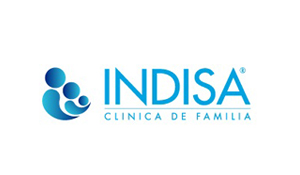Here, he elucidated their idea of clinical paradigm, the perceptual constraints by which the scientist views their globe around him, as well as the paradigm shifts that take place if the observable exceptions to current “laws” of science become sufficiently hard to account fully for, making sure that a brand new explanatory model must certanly be developed.
Kuhn’s classic instance could be the Copernican revolution in astronomy, once the numerous epicycles upon epicycles expected to take care of the Ptolemaic Earth-centered system had become increasingly complex with greater observational precision, and lastly provided solution to the conceptual simpleness regarding the heliocentric model. Needless to say, this modification in thinking failed to come effortlessly. It took devoted people to market the non-intuitive proven fact that our planet, as opposed to being fixed, ended up being really going through room in orbit all over Sun.
Copernicus, Galileo, Kepler, Newton
As most people now understands, Nicolaus Copernicus had been the initial contemporary astronomer to propose the heliocentric view of this system that is solar. He circulated the information and knowledge independently for many of their life that is later posted only when he had been on his deathbed in 1543. It stayed for other people to advance this concept resistant to the strenuous objections associated with the founded capabilities associated with the sixteenth and seventeenth hundreds of years, especially the Church. Key players who used him were better in a position to offer evidence of the specific motions associated with the planets: Johannes Kepler by mathematics and Galileo Galilei by direct observation, since he created the telescope some six years after Copernicus’s death. Finally, in 1684, Isaac Newton surely could show the way the math first brought forward by Kepler could explain  planetary movement, with the famous inverse square legislation when it comes to attraction of public to at least one another that became referred to as “Law of Gravity.”
planetary movement, with the famous inverse square legislation when it comes to attraction of public to at least one another that became referred to as “Law of Gravity.”
The sign in which it is currently located; indeed, his birth is removed from our own era by one full planetary period of Eris, or about 556 years in the natal chart of Nicolaus Copernicus, for which we have a reliable time of birth, Eris is found at 18° aries. The indication boundaries have actually changed somewhat, because of the precession associated with equinoxes, so your the past few years for this Eris position are the 1990s. Copernicus’s natal Eris makes close aspects to numerous associated with other planets in the chart, being sextile Mars; closely sextile both Saturn and Chiron, living close to the midpoint of the trine; sesquiquadrate their Jupiter–Moon combination; and in addition inconjunct (quincunx) both Pluto and Neptune, making Eris the focus of the yod. 2 Additionally there is an in depth contra-parallel between Eris and Mercury, their chart ruler. All of this results in a position that is undeniably powerful of Eris.
It really is interesting that Copernicus’s partile Saturn–Neptune quincunx is just a perfect chime for somebody who would just take a sacred way of current structures and dream new people into being. He idealized the group and felt that there is a religious along with a truth that is mathematical be revealed because of the motion of this planets, including world, across the Sun with what he conceived as circular orbits. 3 This aspect is significantly emphasized because of the partile Eris link with both of these planets, with Saturn, Neptune, and Eris all at 18+ examples of their signs that are respective. I’ve frequently unearthed that the Eris link with natal planets highlights these planets for the specific, in many ways that correspond to much much deeper problems for the heart or the character.
For Galileo and Kepler, created when you look at the after century, Eris in Taurus in each instance makes close aspects with their individual planets. Galileo (chart maybe maybe not shown) has Eris at the top of the chart and for that reason emphasized. Eris makes a square to their likely Leo Ascendant and is closely sextile their Mercury–Pluto combination in Pisces, along with conjunct his Moon and sextile his Pisces Sun. Eris additionally trines Chiron in Capricorn. Famously, Galileo suffered (Chiron) for their radical belief (Eris) into the heliocentric theory of this system that is solar. Having been declared a heretic by the Church for these philosophy, he was obligated to recant and stayed under household arrest for the others of their life.
Kepler’s Eris, during the powerful 15° mark of the fixed indication, makes a partile trine to his Sun and it is trine Venus, bi-quintile (144°) Mars, in close opposition to Saturn, sextile Jupiter, and trine Uranus. His Jupiter at 18° Pisces sextiles his Sun–Venus combination and supports — by square and trine, correspondingly — Copernicus’s partile Saturn–Neptune quincunx in Gemini–Scorpio, staying at the exact same level: 18. this will be fascinating, given that Kepler became the closest subsequent backlink to the heliocentric model, until Newton’s work had been made understood almost eight years after Kepler’s work ended up being posted.














Comentarios recientes